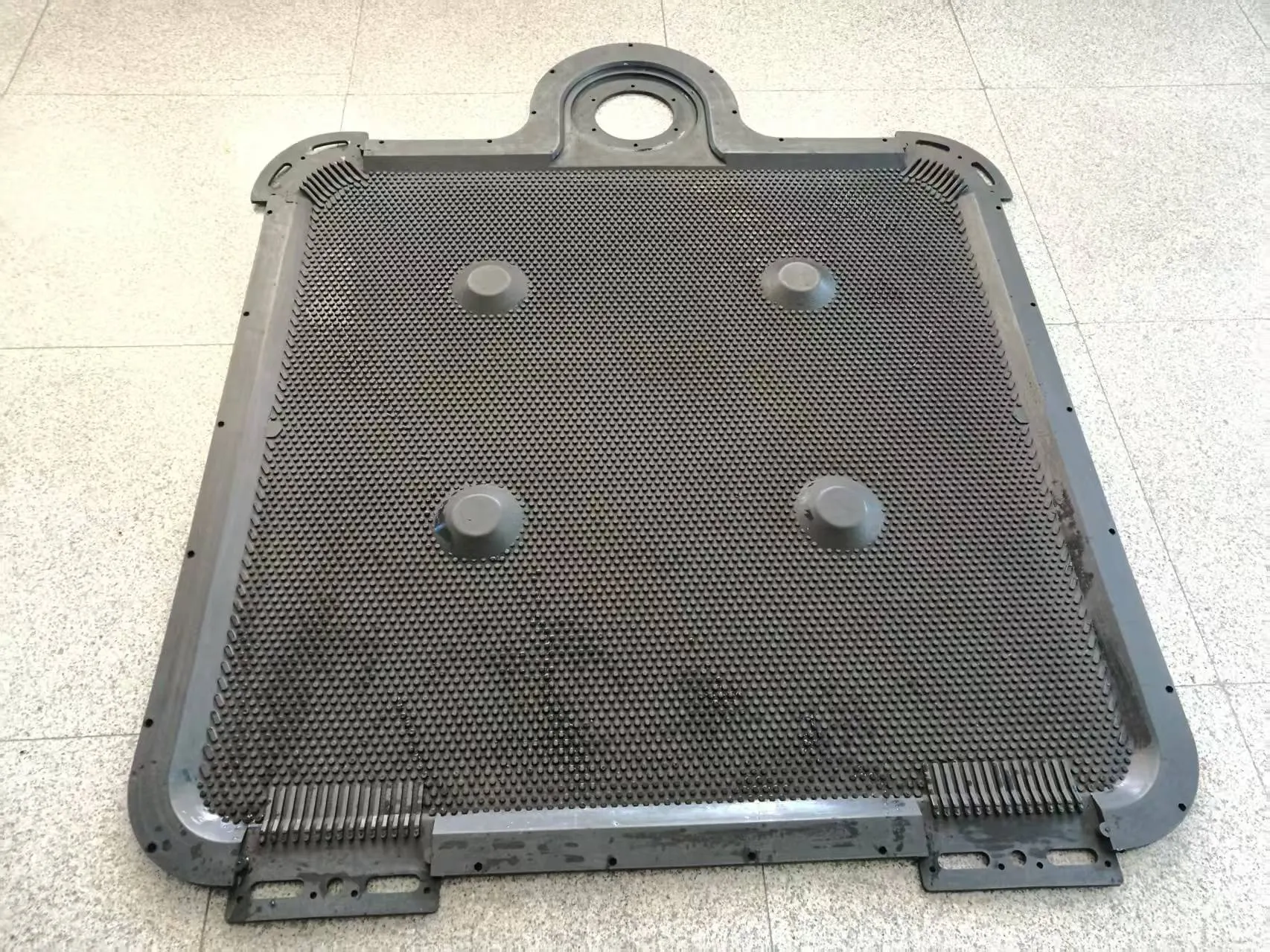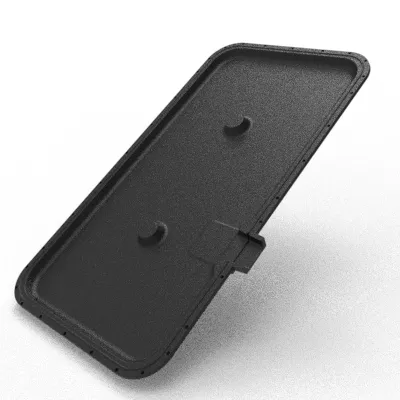Rubber membranes for filter press are of great significance in solid-liquid separation processes. The details are as follows:
- Structure and Materials
- Structure: The rubber membrane is generally a thin, flexible sheet that matches the shape of the filter plate. It is installed between the filter plate and the filter cloth. In some cases, two membranes are used on both sides of the core plate.
- Materials: Common materials include nitrile rubber (NBR) and natural rubber (NR). High-purity NBR membranes with an acrylonitrile content of around 36% are often preferred for their excellent oil resistance, wear resistance, and resistance to compression set. Natural rubber membranes have good elasticity but are less resistant to certain chemical media.
- Working Principle
- Filtration Stage: At the beginning of filtration, the material containing solids is pumped into the filter chamber formed by the filter plates and filter cloths. The filter cloth traps the solid particles to form a filter cake, while the liquid passes through the filter cloth and is discharged. The rubber membrane remains relatively flat.
- Squeezing Stage: After filtration, high-pressure fluid or gas is injected into the space behind the rubber membrane. This causes the membrane to bulge and exert pressure on the filter cake, squeezing out more moisture and achieving further dehydration of the filter cake.
- Performance Characteristics
- High Elasticity and Resilience: Rubber membranes have high elasticity and can quickly rebound under high pressure, ensuring full contact with the filter cake during each squeezing process and leaving no "dead zones".
- Surface Smoothness: High-quality rubber membranes have a dense and smooth surface, which reduces the blockage of the filter cloth by fine particles, ensuring high-throughput filtration.
- Chemical Resistance: Depending on the material, rubber membranes can exhibit good resistance to oils, weak acids and alkalis, enabling them to maintain stable performance in complex chemical environments.
- Applications
- Mining Industry: Widely used in the treatment of mineral processing tailings to improve the dehydration effect of tailings and reduce the moisture content of the filter cake, which is beneficial for subsequent disposal and resource recovery.
- Chemical Industry: In chemical production processes that require solid-liquid separation, such as the production of chemical fertilizers and pesticides, rubber membranes help to separate products and by-products from the reaction solution, improving product quality.
- Wastewater Treatment: In municipal and industrial wastewater treatment plants, rubber membranes in filter presses are used to dewater sludge, reducing its volume and facilitating subsequent treatment and disposal.




